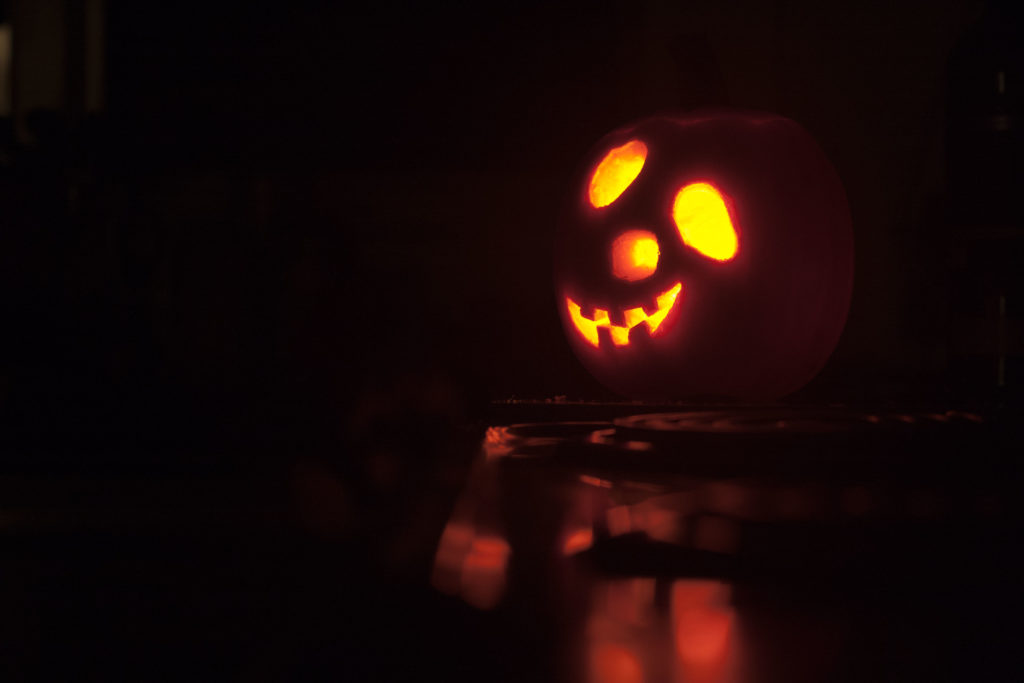Have a drink with: Halloween hooligans
Trick or treat, smell my feet…
Ask them about: Mayhem, outhouses, peanut scramble.
It was 1933, and Charles J. Dalthorp had had it. Writing in the Journal of Education in 1937, the superintendent of schools in Aberdeen, South Dakota, bemoaned the Halloween holiday and its attendant juvenile warfare. Describing the aftermath of the day he calls “Hell-o-e’en” (get it?), he writes that the police in Aberdeen are, plainly: “out-generaled, out-manoeuvred, and finally view the results of battle in large property losses, a complaining citizenry, and a smug but triumphant army of boys who have outguessed the law enforcement agencies.”
Surely he’s overreacting, right? This must be the sort of pearl-clutching exaggeration one expects from days gone by. What adorable mischief did the little scamps get up to?
[I]n 1932, the grand and glorious Hallowe’en brought general property damage in excess of five thousand dollars, and left the streets and avenues in the city strewn with 135 truckloads of junk and refuse.
Um.
All of this occurred in a town with a population of less than 18,000 people.
Suffice it to say helicopter parenting was not a thing in the 1930’s.
In frustration (“if no good came from the attempt, there surely would be no loss”), the Aberdeen schools and city safety officials decided in 1933 to throw a school Halloween party to keep the little boogers monitored and under one roof for the evening. Parents were charged twenty-five cents for adult tickets to bankroll the event, which gathered kids for a scavenger hunt and a game of football, a bag rush and a peanut scramble, all in advance of the scheduled 9:30 p.m. “Big Barbecue Feed.”
At this point I’m sure you have questions. For example, how does the “bag rush” cultivate the attitude of respect and healthy competition that will ultimately deter children from acts of violence?
Three bags will be filled with straw and placed in the centre of the field…When a gun is fired, the riot will start.
Superintendent Dalthorp, can you mansplain this group in five words or less?
Hilarious boys of all ages.
And I’m sure you’re thinking: there’s been a lot of talk about the boys. Are there girls in Aberdeen? Must we also keep them occupied?
Peanut Scramble – Girls.
Girls will line up on the goal line and the peanuts will be distributed upon the fifty-yard line. A whistle will turn them loose.
Peanut Scramble – Boys.
Same as for girls, only more peanuts.
Oh good. Onward.
Dalthorp suggests that teachers use their classroom time to promote the party and its agenda of self-restraint, even providing pledge cards for students to sign:
In exchange for a Football Game, a Bag Rush, a Treasure Hunt, a Peanut Scramble, a Tug of War and a Barbecue Feed on Hallowe’en Night (October 31) at 7:00 p.m., I promise to co-operate with the authorities by not destroying public or private property or engaging in other acts of malicious mischief over the Hallowe’en period.
In Aberdeen, at least, the taming of Mischief Night was a success, with robust cooperation, fun for all and zero property loss in 1936. So in case any of us are feeling anxious or uppity after the election, let’s just make a plan now: we’ll cover Nebraska in peanuts and blow the whistle. Big Barbecue Feed to follow.
Fun Facts:
Dalthorp’s introduction calls the holiday “an evening of nomadic Chic Sales mansions, strewn garbage cans, congested avenues, and general property destruction.” Chic Sale was a film and vaudeville actor who was famous for comedy monologues in the persona of a hayseed carpenter who built outhouses. (You can fill in the rest – and no, Jackass didn’t invent the “nomadic” facility.)
Trick-or-treating as we know it today is a very recent invention, and in fact folks in the 1930’s would have likely had no real concept of handing out candy or treats to costumed kids. Halloween was, at that point, mostly known and celebrated as a boys’ night for pranks. It wasn’t until mid-century that the modern holiday started to take shape, and not without criticism, either: with similar strains as Melanie Thernstrom’s recent New York Times article on “free play,” men especially lamented the loss of masculine freedom associated with a rule-bound, consumerist Halloween that didn’t involve breaking anything.
Halloween was not historically a night for bush-league mischief, either, as you might imagine from poor Mr. Dalthorp’s account: CT Humanities’ history blog describes some seriously dangerous early 1900’s pranks, including an incident in which kids loaded a wagon with trash, set it on fire and pushed the whole lot downhill towards trees. The article includes a photo in which boys “managed to suspend a sleigh from a two-story building and perch another awkwardly by the roadside.”
Five thousand dollars in property damage in 1932 would work out to about eighty grand today. It’s enough to make you nostalgic for the Druids.
Additional Reading:
Charles J. Dalthorp, Laying the Ghost of Hallowe’en, The Journal of Education, Vol. 120, No. 1 (January 4, 1937) (excerpt)
Fantastic chapter by Samira Kawash on Halloween, including the transformation of a wanton occasion, children as gangsters, the origins of the UNICEF Halloween charity drive, and whether adults or kids invented trick-or-treating: Gangsters, Pranksters and the Invention of Trick or Treating, 1930-1960
David J. Skal, Death Makes a Holiday: A Cultural History of Halloween
